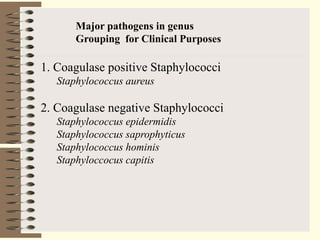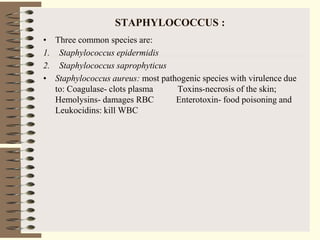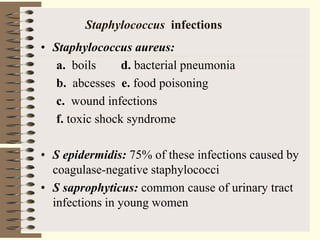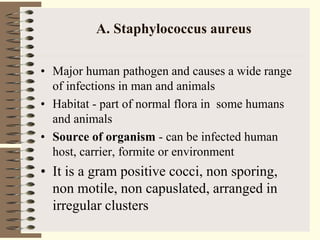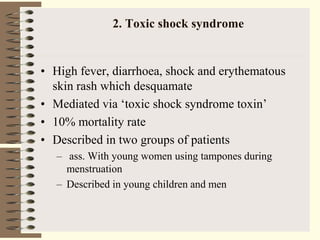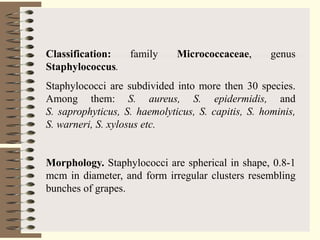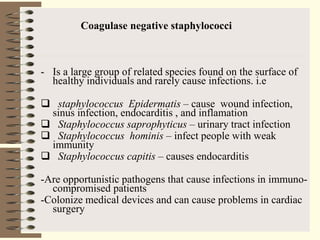Gram positive bacteria include cocci like Staphylococcus and Streptococcus, as well as rods like Bacillus. Major pathogens in the genus Staphylococcus include Staphylococcus aureus and coagulase-negative staphylococci like S. epidermidis. S. aureus is a major human pathogen capable of causing skin infections like boils and abscesses, as well as toxin-mediated diseases like food poisoning and toxic shock syndrome due to virulence factors like coagulase and various toxins. Coagulase-negative staphylococci are generally opportunistic pathogens of immunocompromised individuals.







